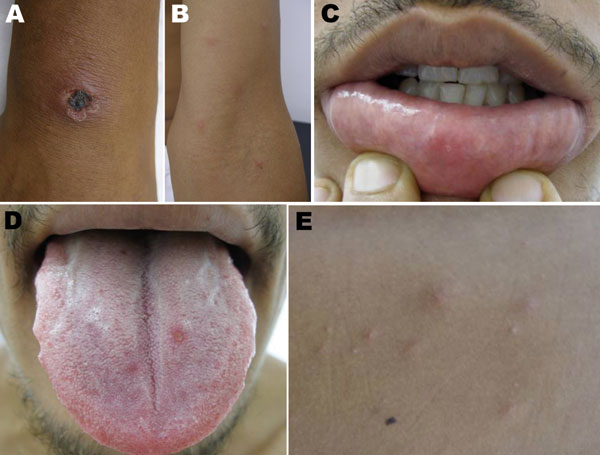Volume 17, Number 2—February 2011
Dispatch
Eschar-associated Spotted Fever Rickettsiosis, Bahia, Brazil
Figure 1

Figure 1. Lesions on day 6 of illness of patient with eschar-associated rickettsial disease, Bahia, Brazil, 2007. A) Eschar on right wrist; B) papular skin rash on left elbow; C) ulcerated lesion on lower lip; D) erosions on tongue mucosa; E) vesicular papular lesions on trunk.
Page created: July 13, 2011
Page updated: July 13, 2011
Page reviewed: July 13, 2011
The conclusions, findings, and opinions expressed by authors contributing to this journal do not necessarily reflect the official position of the U.S. Department of Health and Human Services, the Public Health Service, the Centers for Disease Control and Prevention, or the authors' affiliated institutions. Use of trade names is for identification only and does not imply endorsement by any of the groups named above.